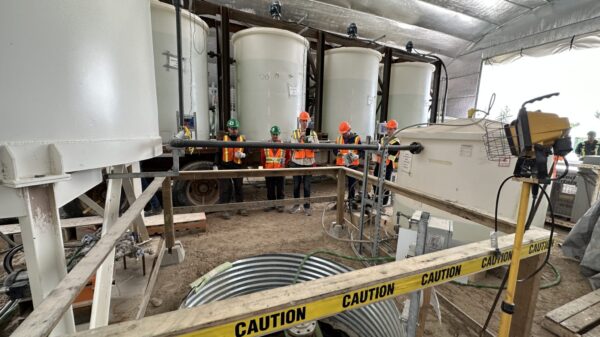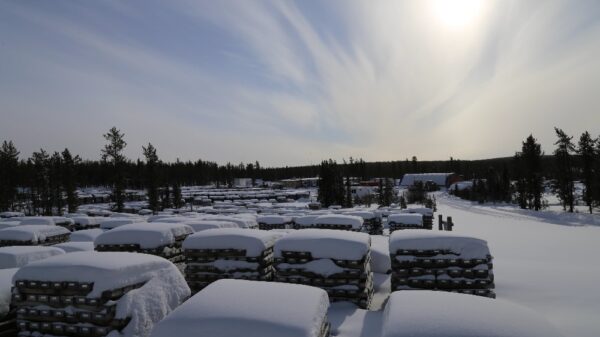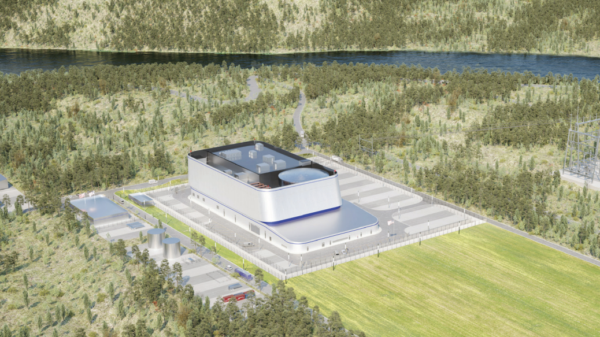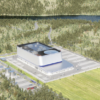Saskatchewan and Ontario´s electricity provider will partner to build the first small modular reactor in the uranium-rich province.
On Monday, Saskatchewan’s minister responsible for SaskPower Dustin Duncan and Ontario Energy Minister Todd Smith signed the master services agreement for a fleet of reactors.
Ontario Power Generation subsidiary Laurentis Energy Partners will start building a GE-Hitachi BWRX-300 SMR which is the same model as the one in Darlington, Ontario.
SaskPower has pinpointed Estevan in the southeast and Elbow, situated roughly midway between Saskatoon and Regina, as potential sites for hosting the reactors. SaskPower CEO Rupen Pandya said that a conclusive decision on the chosen location for constructing an SMR is anticipated by late 2024.
“To have an agreement that allows us to tap into that expertise and knowledge from a jurisdiction and organizations that have a great deal of expertise and history in the nuclear sector is critically important for Saskatchewan to carry forward with,” Duncan said.
Laurentis Energy Partners will concentrate on program management, licensing, and operational readiness endeavours associated with the project. The agreement is set to remain in effect for five years.
An earlier agreement between OPG and SaskPower pertains to the sharing of insights gained, technical resources, expertise, best practices and operational experiences.
Saskatchewan has been receiving attention and investments to increase its nuclear energy tech recently. The province also is home to the Athabasca Basin which has the most uranium-rich deposits worldwide.
In August, Minister of Energy and Natural Resources Jonathan Wilkinson announced a $74 million funding to jumpstart the deployment of the reactors. Last April, the governments of Saskatchewan and New Brunswick signed a memorandum of understanding (MoU) to develop a small modular reactor (SMR).
Ontario Power Generation and its subsidiary, Laurentis Energy Partners, will collaborate with SaskPower to advance Saskatchewan’s SMR strategy. They announced details today of a Master Services Agreement to further Canadian deployment of SMR technology.https://t.co/5vUVOTPseP
— Heather Exner-Pirot (@ExnerPirot) November 20, 2023
Read more: Governments of Saskatchewan and New Brunswick join forces on SMR development
Read more: Canada invests up to $74M in small modular reactors for Saskatchewan
The rising popularity of Small Modular Reactors (SMRs) as a clean energy solution is intensifying the demand for uranium.
Countries aiming for a carbon-free future are increasingly turning to SMRs due to their modular design and enhanced safety features. As a result, the need for uranium, the primary fuel for SMRs, is on the upswing.
Approximately 60 power-generating facilities are currently being built throughout the globe, requiring a vast amount of uranium fuel. In recent studies, experts have found that uranium production will need to increase two-fold in the next 20 years to meet that demand.
This month, NexGen Energy Ltd. (TSX: NXE) (NYSE: NXE) received the first Provincial Environmental Assessment (EA) approval for a uranium project in the Athabasca Basin in over two decades. The region hosts the world’s highest-grade uranium mine, Cigar Lake. Junior explorer ATHA Energy Corp. (CSE: SASK) (FRA: X5U) (OTCQB: SASKF) holds rights to 10 per cent of resources discovered on certain portions of the land package held by NexGen.
Since January, shares of the leading uranium producer Cameco Corporation (TSX: CCO) (NYSE: CCJ) have increased by almost 100 per cent.
The rising popularity of SMRs globally intensifies the demand for uranium, emphasizing the crucial role of regions like Saskatchewan, home to abundant uranium deposits, in meeting the growing need for clean and reliable electricity.
ATHA Energy Corp. is a sponsor of Mugglehead News coverage
Natalia@mugglehead.com













